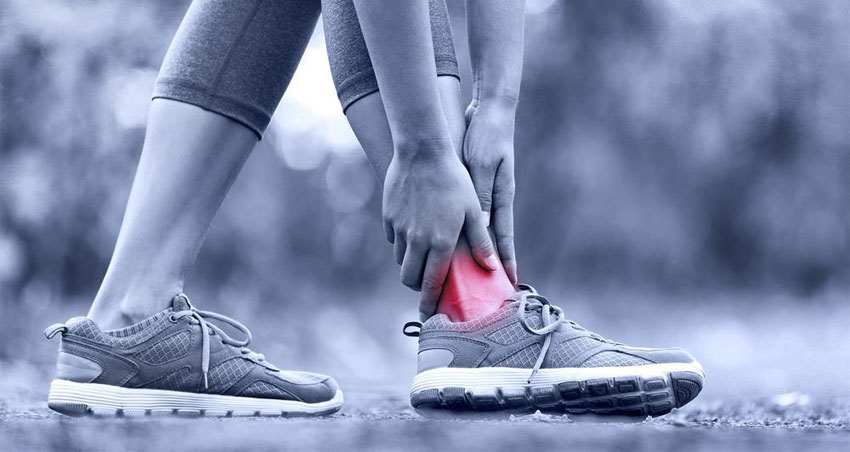Ankle Sprains
WHAT ARE ANKLE SPRAINS?
An ankle sprain happens when the ligaments in the ankle are stretched or torn. This usually affects the ligaments on the outside of the ankle. The ankle will be sore and possibly a little swollen because of the ligament damage. For serious sprains, the ankle will be very swollen, bruised, and too painful to walk on.
WHAT CAUSES ANKLE SPRAINS?
Ankle sprains are caused by painful injury like sudden movement that causes the ankle to roll outwards while the foot rolls inwards. This causes the ligaments to stretch beyond their capacity, damaging or even tearing them. Common causes of such injuries involve sports, biomechanical instability, or trauma (simply walking on uneven pavement can be a cause).
WHO GETS ANKLE SPRAINS?
People playing sports or taking part in athletic activity have the highest risk of ankle sprains – ankle sprains are the most common exercise-related injury. Children and teens also have a high rate of ankle sprains.
HOW TO TREAT ANKLE SPRAINS
An ankle sprain might not seem like a problem at first, but you should treat it quickly to avoid any long-term issues with joints or ligament weakness. Depending on how severe the injury is, the ankle might need to be put in a plaster cast or brace to make sure that the bones align properly. Follow the RICE method (rest, ice, compression, elevation) in the first couple of days after the injury. Stretching and strengthening exercises will help movement, improve stability, and reduce the formation of scar tissue.
PREVENTING ANKLE SPRAINS AND CARING FOR YOUR FEET
Most ankle sprains are easily preventable. Ask us for a biomechanical assessment – we can test the way you move and let you know if there are any issues. We can provide orthotics and other treatments to correct and make up for any biomechanical problems that may increase your risk of ankle sprains. Wear shoes that are comfortable, fit you well and provide good ankle support. Exercises to strengthen your muscles, tendons, and ligaments will ensure your ankle has good support. Always warm up and stretch before any sport or exercise. You may want to consider wearing an ankle brace if you have had an injury before. Finally, do not ignore any pain in your ankle – it could be a sign of injury, and putting off treatment can cause long-lasting damage.

